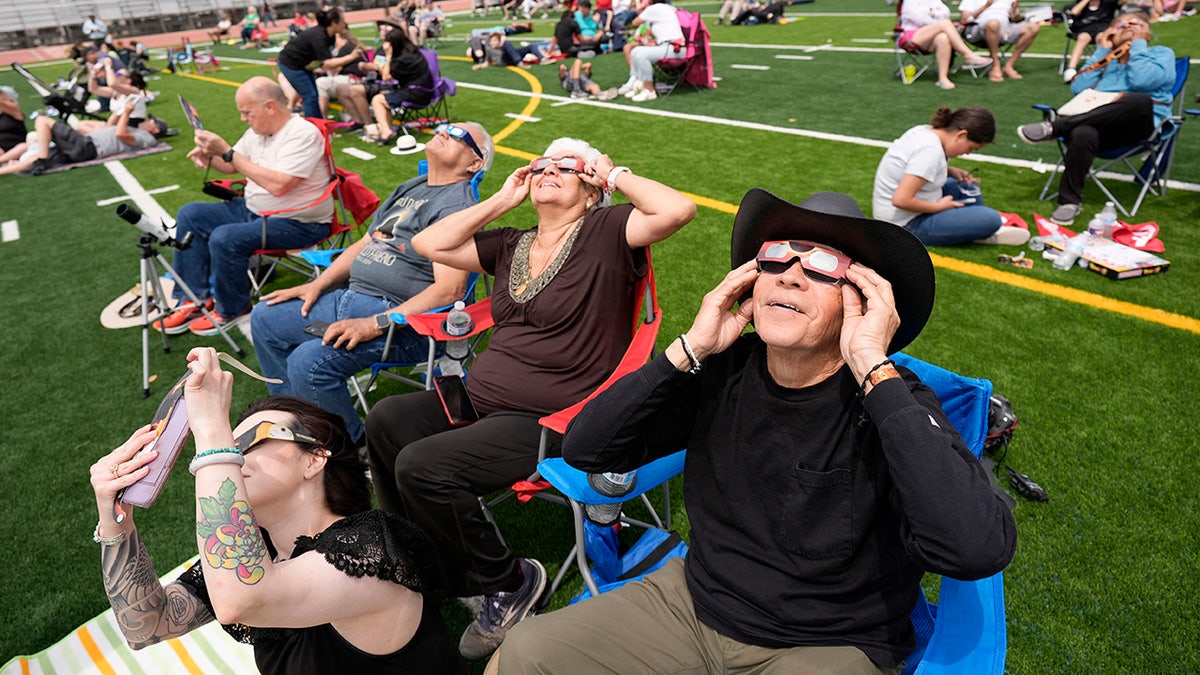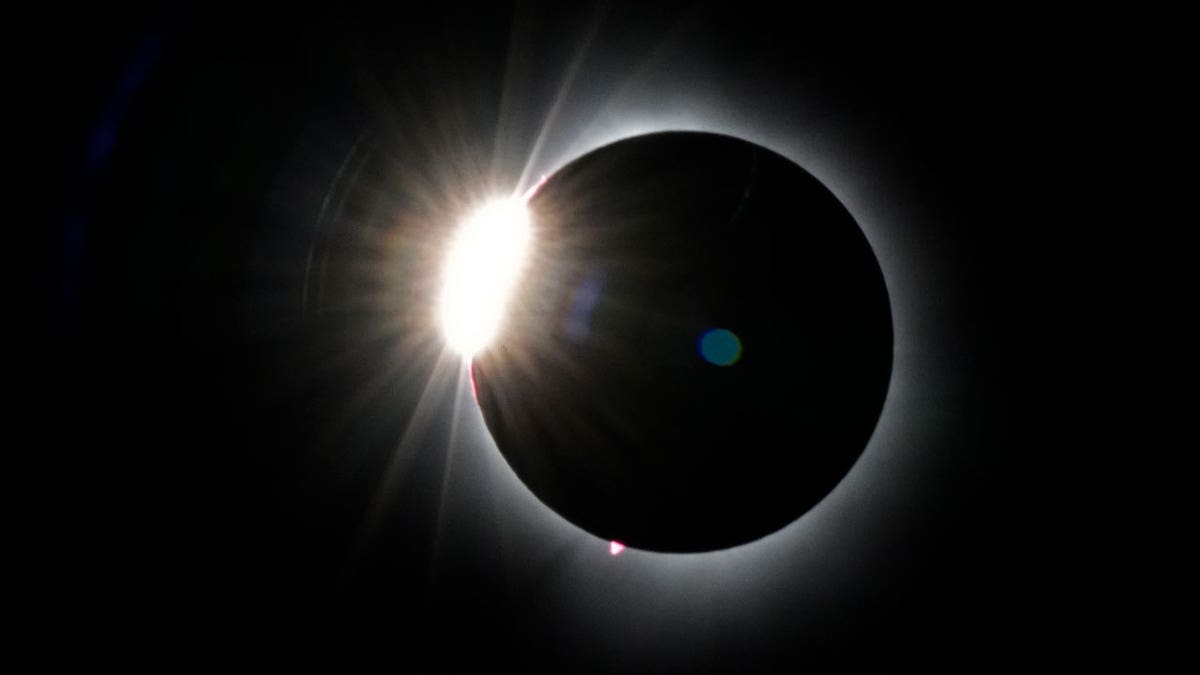Charles Barkley mocks ‘losers’ watching total solar eclipse: ‘We’ve all seen darkness before’

People watch as the moon partially covers the sun during a total solar eclipse in Eagle Pass, Texas on Monday, April 8, 2024. (AP Photo/Eric Gay)
“Were y’all some of them losers standing outside watching that today?” Bakley said during Monday’s broadcast of the men’s college basketball national championship game.
Broadcaster Ernie Johnson rejected the statement, but Barkley continued.
“Yes they are. Hey, we’ve all seen darkness before. Stop it.”
“I’m not going to sit outside like an idiot and wait on the darkness,” he continued. “It’s going to be dark when we go outside tonight.”
 Millions of spectators in North America took part in watching the total solar eclipse on Monday.
Millions of spectators in North America took part in watching the total solar eclipse on Monday.
The line of totality — or where there was complete sun coverage — spanned across 15 states as the path traveled from Mexico, arching northeast from Texas to Ohio before reaching Canada and going back into Maine.
 Total solar eclipses occur every two to three years. The next full solar eclipse will take place in 2026 and should pass over the northern fringes of Greenland, Iceland and Spain. The next time the U.S. will experience it will be in 2033 when it brushes Alaska.
Total solar eclipses occur every two to three years. The next full solar eclipse will take place in 2026 and should pass over the northern fringes of Greenland, Iceland and Spain. The next time the U.S. will experience it will be in 2033 when it brushes Alaska.
